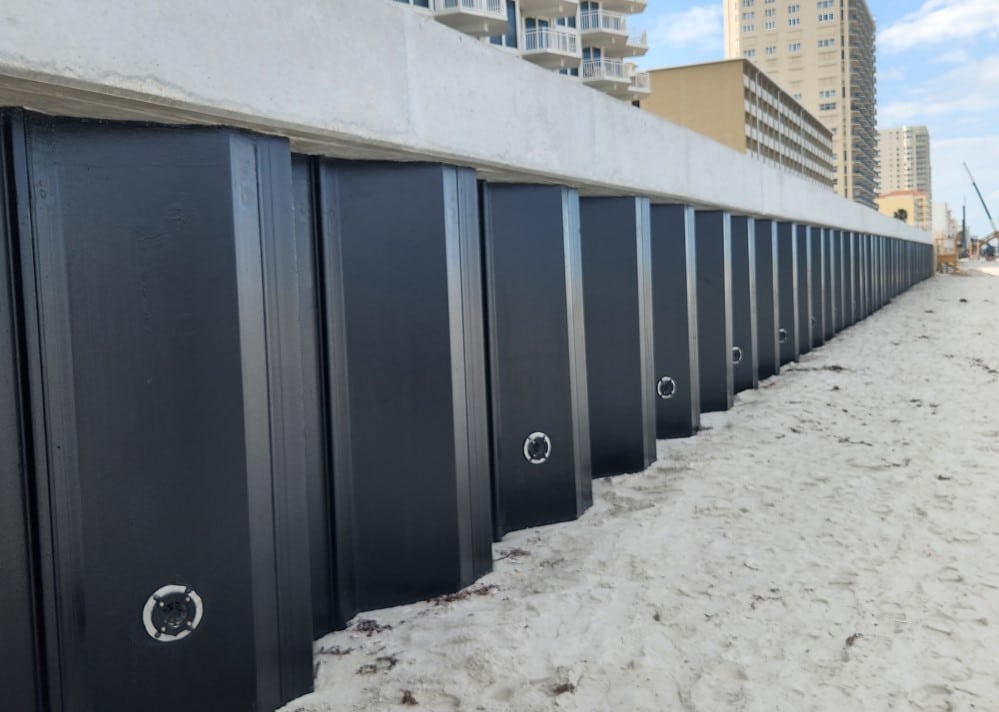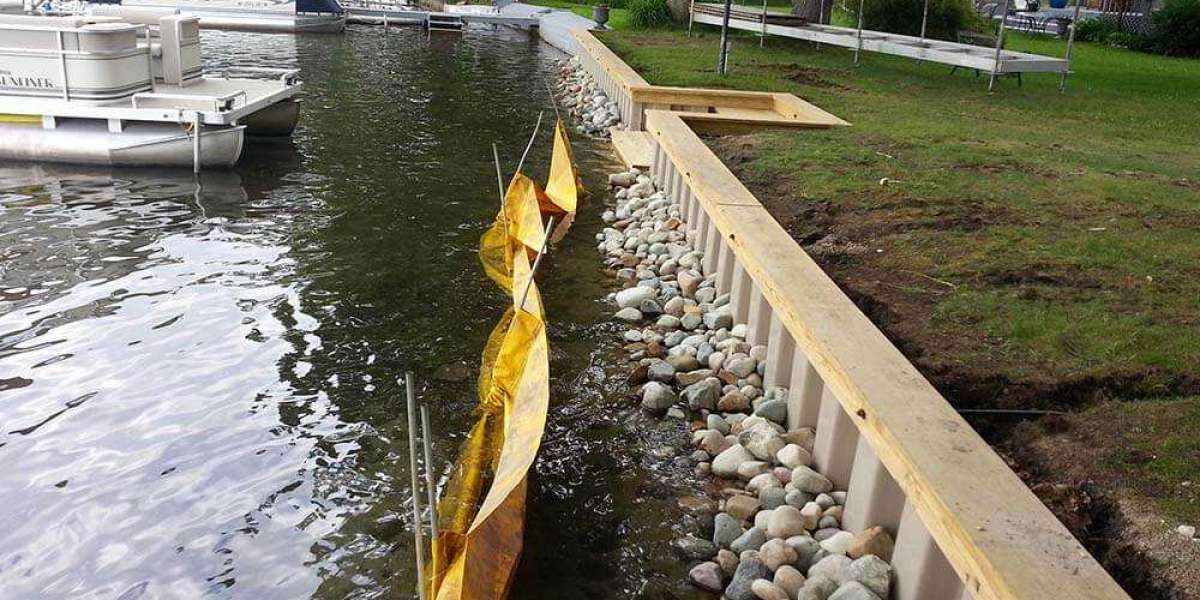Protect Your Waterfront with Expert Seawall Repair
When it comes to safeguarding your waterfront property, seawall repair is a critical aspect of maintaining its structural integrity. Over time, seawalls are subjected to wear and tear due to exposure to the elements, erosion, and shifting tides. A well-maintained seawall can protect your land from further damage, prevent flooding, and preserve the value of your property.
This guide will explore everything you need to know about seawall repair, from common issues to the factors you should consider before making a decision. We’ll provide in-depth insights, including technical specifications and helpful tips to ensure you make an informed choice.
Common Seawall Issues
Seawalls are built to withstand harsh environmental conditions, but they aren’t immune to damage. Common issues that may require repair include:
- Erosion: Over time, water can erode the foundation of a seawall, leading to cracks and weakened support.
- Cracks and Gaps: Seawalls can develop cracks or gaps that allow water to seep through, compromising the structure.
- Concrete Deterioration: Exposure to saltwater can break down the materials used in seawalls, especially concrete, leading to weakening and potential collapse.
- Settlement: Shifting soil and settling of the ground beneath the seawall can cause misalignment or tilting.
- Corrosion: Metal components in seawalls, such as steel reinforcements, can corrode over time due to water exposure.

Types of Seawall Repair Methods
Different types of repairs are available depending on the extent of the damage. The most common methods include:
Concrete Seawall Repair
Concrete is a common material for seawalls, but it can crack or deteriorate over time. Repair methods for concrete seawalls include:
- Crack Injection: Filling cracks with epoxy or polyurethane resins to restore strength.
- Concrete Patch Repair: Applying a concrete mix to fill large holes or cracks.
- Reinforcement: Adding steel reinforcement to ensure long-term durability.
Steel Seawall Repair
Steel seawalls can corrode, especially when exposed to saltwater. Repair methods include:
- Cathodic Protection: Using a sacrificial anode to prevent further corrosion.
- Corrosion Prevention Coatings: Applying protective coatings to metal surfaces.
- Steel Plate Replacement: Replacing damaged steel plates to maintain structural integrity.
Vinyl Seawall Repair
Vinyl seawalls are lightweight and resistant to corrosion but can suffer from warping and damage. Repair techniques include:
- Vinyl Panel Replacement: Swapping out damaged panels for new ones.
- Seam Reinforcement: Adding seals or fasteners to strengthen joints.
Seawall Material | Common Issue | Repair Method | Lifespan After Repair |
Concrete | Cracks, erosion | Crack injection, patching, reinforcement | 10-20 years |
Steel | Corrosion, rust | Cathodic protection, coatings, plate replacement | 15-30 years |
Vinyl | Warping, cracking | Panel replacement, seam reinforcement | 10-15 years |
Factors to Consider Before Making a Decision
When deciding on seawall repairs, there are several factors you need to consider to ensure the repair is both effective and cost-efficient:
- Damage Extent: Evaluate how extensive the damage is. Minor cracks can often be repaired with simple patching, while severe erosion may require more significant intervention.
- Seawall Material: The material of your seawall plays a major role in determining the best repair method. For instance, concrete requires different treatment than steel or vinyl.
- Location and Tides: Consider the water conditions around your seawall. Areas with high tides or frequent storms may require more durable repairs.
- Budget: Some repairs are more cost-effective than others. However, it's crucial not to skimp on repairs that can jeopardize the safety of your property.

Bonus Tip: Consider the long-term cost of maintenance when choosing a repair method. While some repairs may have a lower initial cost, they could require frequent maintenance, which can add up over time.
Repair Process Overview
The seawall repair process typically follows these steps:
- Inspection: A professional assesses the damage to determine the extent of the repairs needed.
- Cleaning: The area around the seawall is cleaned to remove debris and allow for proper inspection and repair.
- Repairing: Cracks are filled, panels are replaced, or the seawall is reinforced as necessary.
- Sealing and Protection: After repairs, a protective coating or sealant is applied to prevent further damage from the elements.
Technical Specifications for Seawall Repairs
Repair Method | Suitable Material | Average Cost Range | Lifespan | Additional Considerations |
Crack Injection | Concrete | $300 - $700 per crack | 10-15 years | Requires clean crack surfaces |
Concrete Patch Repair | Concrete | $500 - $2,000 | 10-20 years | Works well for moderate damage |
Cathodic Protection | Steel | $1,000 - $5,000 | 15-30 years | Best for severe corrosion issues |
Panel Replacement | Vinyl | $1,500 - $3,000 | 10-15 years | Requires replacing multiple panels |
Things to Consider Before Making a Decision
Before proceeding with seawall repairs, keep these points in mind:
- Professional Evaluation: Always seek a professional evaluation to assess the full extent of the damage. An expert can offer insights into the most cost-effective and durable repair options.
- Environmental Factors: The surrounding environment, including water levels, tides, and storm patterns, can affect the longevity and success of repairs.
- Regulations: Local building codes or environmental regulations may influence the type of repairs you can perform. It’s essential to ensure compliance with these rules before proceeding.
FAQs
How long does a seawall repair take?
The duration of the repair depends on the severity of the damage and the chosen method. Minor repairs may take a few days, while more extensive work could take weeks.
Can I repair my seawall myself?
DIY seawall repairs are possible for small cracks or damage, but significant issues such as structural deterioration should be handled by professionals.
What is the lifespan of a seawall after repair?
Seawalls can last anywhere from 10 to 30 years after a repair, depending on the material and the type of repair performed.
How often should seawalls be inspected?
Seawalls should be inspected at least once a year, or after a major storm or flooding event, to ensure that no issues have developed.
What are the signs that my seawall needs repair?
Common signs include visible cracks, significant erosion, leaning or misalignment, and water leakage behind the seawall. If any of these issues are noticed, it’s crucial to consult a professional for an assessment.
Make the Right Decision
Seawall repair is an important part of maintaining the safety and value of your waterfront property. By understanding the different types of repairs, the factors that influence repair choices, and the repair process itself, you can make an informed decision. Always consult with a professional to assess the damage and choose the most appropriate repair method based on your specific needs.




